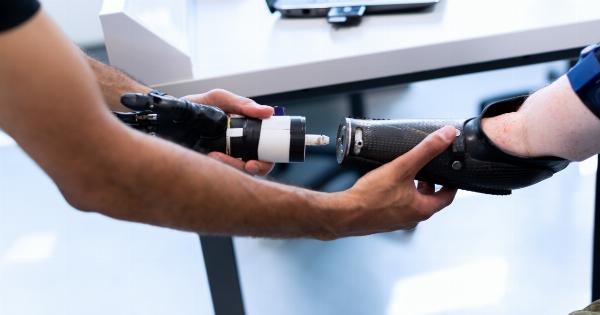Advancements in technology and neuroscience have led to a groundbreaking breakthrough in the field of mobility for paralyzed individuals.
A brain-controlled exoskeleton has been developed, providing hope and freedom to those who were once confined to a wheelchair.
The birth of the brain-controlled exoskeleton
The concept of a brain-controlled exoskeleton originated from the desire to give paralyzed individuals the ability to walk again.
Scientists and engineers collaborated to develop a cutting-edge technology that could translate the brain’s signals into physical movements.
Understanding the science behind the brain-controlled exoskeleton
The brain-controlled exoskeleton relies on the principle of neural interfaces, where electrodes are implanted into the patient’s brain. These electrodes pick up electrical signals from the brain, which are then decoded by a computer algorithm.
The algorithm detects the intention to move and sends the corresponding commands to the exoskeleton.
Training the brain and the exoskeleton
Prior to using the brain-controlled exoskeleton, patients undergo an intensive training program. This training involves mentally visualizing movements and practicing control over virtual avatars that mimic the exoskeleton’s actions.
The brain gradually learns to adapt, forming new neural connections that allow for better control.
Regaining the ability to walk
The brain-controlled exoskeleton represents a significant advancement in the field of mobility for paralyzed individuals. By wearing the exoskeleton, users can stand, walk, and even climb stairs with relative ease.
This breakthrough technology restores a sense of independence and improves quality of life for those affected by paralysis.
Challenges and limitations
While the brain-controlled exoskeleton has shown tremendous promise, there are still several challenges and limitations to overcome. One major obstacle is the complexity of the technology itself.
The implantation of electrodes into the brain requires precision and carries certain risks. Additionally, the exoskeleton’s size and weight pose limitations on its practicality and ease of use.
Expanding the potential of the brain-controlled exoskeleton
Researchers are constantly striving to improve the brain-controlled exoskeleton to address its current limitations. This includes developments in miniaturization, reducing the size and weight of the exoskeleton while maintaining its functionality.
Furthermore, advancements in non-invasive techniques, such as using external sensors to pick up brain signals, may eliminate the need for surgical procedures.
Applications beyond mobility
While the primary focus of the brain-controlled exoskeleton is to restore mobility, the technology has potential applications beyond walking.
Researchers are exploring its use in rehabilitation therapy, enabling patients to regain control over their limbs through neurofeedback. Additionally, the brain-controlled exoskeleton could have implications in industrial settings, where it can enhance human strength and endurance.
The future of brain-controlled exoskeleton technology
The future holds great promise for the advancement of brain-controlled exoskeleton technology.
Continued research and development will lead to improvements in usability, reducing the invasiveness of the technology as well as making it more accessible and affordable. This breakthrough not only benefits paralyzed individuals but also paves the way for advancements in neuroscience and human-machine interfaces.
A transformative breakthrough
The development of the brain-controlled exoskeleton represents a transformative breakthrough in the lives of paralyzed individuals.
By harnessing the power of the mind, this technology is giving hope to those who were once limited by their physical abilities. With further advancements, the brain-controlled exoskeleton has the potential to redefine mobility and independence for millions around the world.































